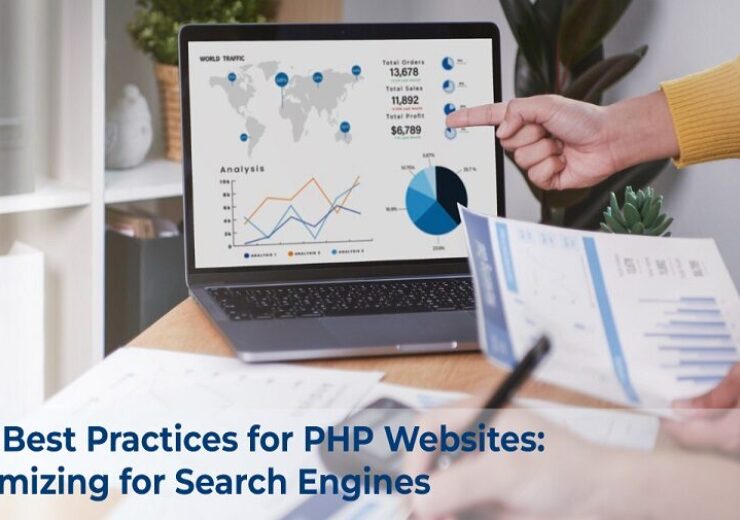What Should Be The First Step of A Structured SEO Plan?

Introduction:
In today’s online world, businesses must be seen. A good SEO plan, like a compass, shows businesses how to succeed online. One important part of SEO is a website audit, which checks everything on your website to see if it’s working well. As a Top SEO Service Provider, NWDCo Software Solutions knows how important this first step is. This guide explains why website audits are important, what they check, and how to use them to improve your SEO.
Understanding the Importance of a Website Audit:
—————————————–
The key to a successful SEO strategy is knowing how your website is doing and where it can get better. A website audit is like the foundation of a building—it’s where you start to make things better. When you carefully check every part of your website, like its technical setup, content, and links, you learn important things that help you make smart choices about how to improve.
A website audit gives you a complete picture of how your site is doing. It looks at everything from how fast your site loads to how easy it is to use on mobile devices. This helps you spot any issues that might be making it hard for people to find your site on search engines. For example, a technical SEO analysis checks things like how fast your site loads, whether it works well on phones, and whether search engines can easily explore it. On-page SEO evaluation looks at elements like your page titles, descriptions, and headings. Making sure these elements match the keywords you’re targeting can help your site rank higher in search results.
Also, when you check your content quality, you don’t just look at how many times you’ve used certain words. You also see if the content is interesting, unique, and fits what people are looking for. This helps you know where you can improve and what content you need more of, setting a good base for your content plan.
Technical SEO Analysis:
—————————————–
- Website Speed and Performance: Evaluate page load times and identify areas for improvement to enhance user experience and search engine rankings.
- Mobile-Friendliness: Assess the responsiveness and usability of the website on mobile devices, ensuring compatibility across various screen sizes and resolutions.
- Crawlability and Indexability: Examine the website’s structure, internal linking, and robots.txt file to ensure that search engine bots can crawl and index all relevant pages effectively.
- Site Architecture: Analyze the website’s navigation, URL structure, and sitemap to facilitate easier navigation for users and search engines alike.
On-Page SEO Evaluation:
—————————————–
- Title Tags and Meta Descriptions: Review the optimization of title tags and meta descriptions to ensure relevance, clarity, and keyword inclusion.
- Heading Tags and Content Structure: Assess the usage of heading tags (H1-H6) to organize content hierarchically and improve readability. Evaluate the overall structure and formatting of the content to enhance user experience.
- Keyword Optimization: Analyze the presence and placement of targeted keywords throughout the content, ensuring natural integration without keyword stuffing.
- Internal Linking: Review the internal linking structure to facilitate navigation and distribute link equity effectively across the website.
Content Quality Assessment:
—————————————–
- Relevance and Engagement: Evaluate the relevance of the content to the target audience and its ability to address their needs and interests. Assess engagement metrics such as time on page, bounce rate, and social shares.
- Uniqueness and Originality: Check for duplicate content issues and ensure that the content is original, authoritative, and provides value to users.
- Depth and Coverage: Assess the depth and comprehensiveness of the content, identifying gaps that need to be filled and expansion opportunities.
- Multimedia Integration: Consider the use of multimedia elements such as images, videos, and infographics to enhance the visual appeal and engagement of the content.
Backlink Profile Analysis:
—————————————–
- Quality and Quantity: Evaluate the quality and diversity of inbound links pointing to the website, considering factors such as domain authority, relevance, and anchor text diversity.
- Link Acquisition Strategies: Identify opportunities for acquiring high-quality backlinks through outreach, content marketing, guest blogging, and digital PR efforts.
- Toxic Links: Identify and disavow any toxic or spammy backlinks that may be harming the website’s credibility and search engine rankings.
- Competitor Analysis: Benchmark the website’s backlink profile against competitors to identify areas of strength and weakness and inform link-building strategies.
Utilize SEO Audit Tools:
—————————————–
Leverage a variety of SEO audit tools and software solutions to streamline the audit process and gather actionable insights. Tools such as Screaming Frog, SEMrush, Moz, and Ahrefs offer comprehensive site audit functionalities, allowing businesses to identify technical issues, on-page optimization opportunities, and backlink insights efficiently. Take advantage of free tools provided by search engines such as Google Search Console and Bing Webmaster Tools to gain additional insights into the website’s performance, indexation status, and search visibility.
Prioritize User Experience:
—————————————–
In addition to addressing technical and on-page SEO factors, prioritize user experience during the audit process. Ensure that the website is intuitive, easy to navigate, and optimized for mobile devices. Consider factors such as page speed, site structure, navigation menus, and internal linking to enhance user experience and engagement.
Conduct usability testing and gather feedback from real users to identify pain points and areas for improvement. Implement user-centric design principles and best practices to create a seamless and enjoyable browsing experience for visitors.
Set Clear Objectives and Goals:
—————————————–
Define clear objectives and goals for the SEO audit based on the business’s overarching objectives and key performance indicators (KPIs). Whether the goal is to increase organic traffic, improve keyword rankings, boost conversion rates, or enhance brand visibility, align the audit findings with measurable outcomes.
Set SMART (Specific, Measurable, Achievable, Relevant, Time-bound) goals to provide clarity and direction for the audit process. Establish benchmarks and key milestones to track progress and measure the success of the SEO strategy over time.
Conclusion:
In conclusion, the first step of a structured SEO plan—conducting a comprehensive website audit—is indispensable for optimizing your online presence and achieving sustainable growth. By evaluating technical aspects, on-page optimization, content quality, and backlink profiles, businesses can identify areas of improvement and develop a tailored SEO strategy that delivers tangible results. Incorporating actionable insights and utilizing specialized tools and resources can streamline the audit process and provide valuable insights into the website’s performance. Remember, SEO is an ongoing endeavor, and regular audits are essential for maintaining and improving your website’s visibility, relevance, and authority in the ever-evolving digital landscape.




